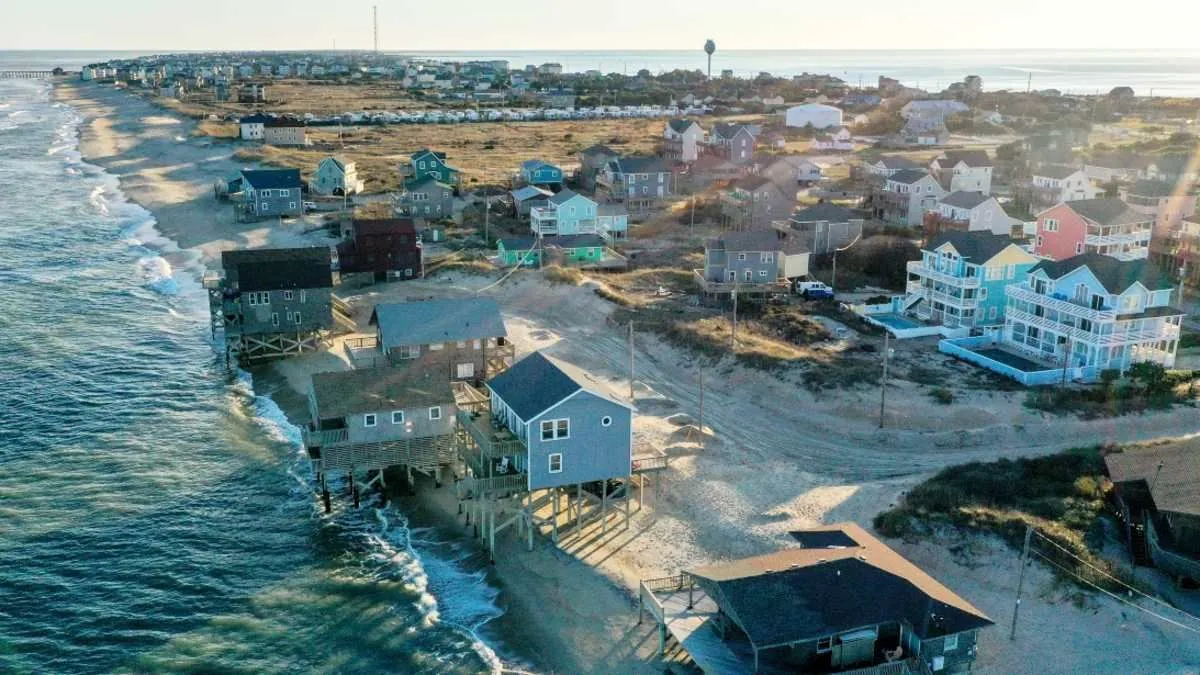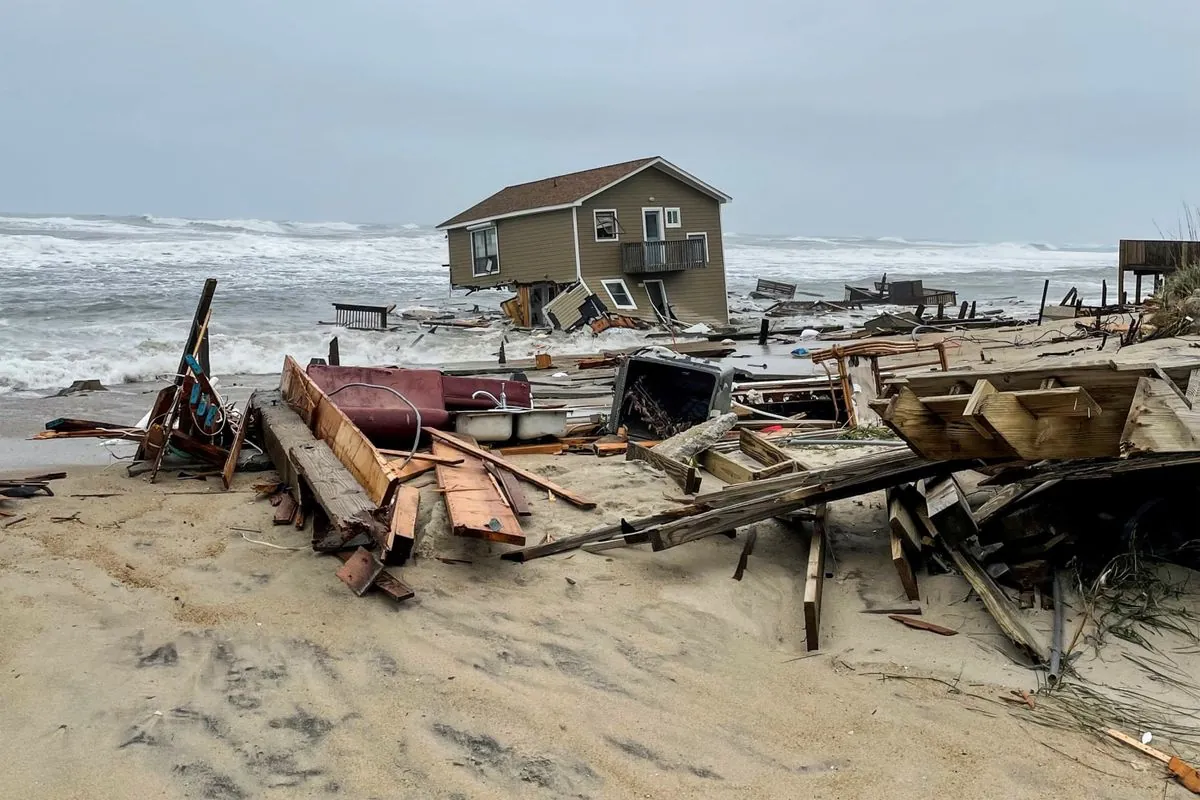Rodanthe's Vanishing Homes: Coastal Erosion Crisis Unfolds on Outer Banks
Rodanthe, NC faces accelerating coastal erosion, with 10 homes lost since 2020. Climate change and barrier island dynamics pose challenges for coastal communities nationwide.

In the picturesque village of Rodanthe, located on North Carolina's Outer Banks, a slow-moving disaster is unfolding. Since 2020, approximately four years ago, ten residences have succumbed to the relentless Atlantic Ocean. The most recent incident occurred when a structure nicknamed "Front Row Seats" collapsed into the surf, its wooden supports giving way to the persistent waves.
This ongoing crisis highlights the challenges faced by coastal communities built on barrier islands, which are dynamic landforms known to shift and even vanish over time. David Hallac, superintendent of Cape Hatteras National Seashore, explains that these islands form as waves deposit sediment off the mainland and are constantly reshaped by ocean forces.
The Outer Banks, a 200-mile string of barrier islands, have a rich history dating back to the first English settlement in North America in 1585. However, their allure as a tourist destination, attracting millions of visitors annually, is now overshadowed by the threat of erosion.

Rodanthe's predicament is part of a broader issue affecting Hatteras Island, which has experienced beach erosion for decades. The Cape Hatteras Lighthouse, an iconic structure standing 198 feet tall, serves as a stark reminder of this ongoing process. Built 154 years ago, it originally stood 1,500 feet from the ocean. By 1919, that distance had shrunk to just 300 feet, necessitating its relocation 2,900 feet inland in 1999.
The erosion rate in some areas reaches an alarming 10 to 15 feet per year, gradually consuming the white sandy beaches, dunes, and eventually threatening structures. Noah Gillam, Dare County's planning director, notes that many affected homes were likely compliant with setback requirements when built decades ago, often hundreds of yards from the dune line.
Environmental concerns extend beyond property loss. A single home collapse can scatter debris up to fifteen miles along the coast, potentially injuring beachgoers and contaminating the environment. This threat is compounded by the unique ecosystem of the Outer Banks, which includes maritime forests, salt marshes, and tidal flats, home to endangered species such as sea turtles and piping plovers.
Addressing this crisis presents significant challenges. Potential solutions include beach nourishment, a practice used in some parts of the Outer Banks since the 1960s. However, the estimated cost of $40 million for Rodanthe alone poses a substantial financial burden for the small community.
"This is a national issue."
Indeed, coastal erosion affects communities beyond the Outer Banks. The problem extends to California's coast, the Great Lakes, and various river systems across the United States. Braxton Davis, executive director of the North Carolina Coastal Federation, emphasizes that rising sea levels will only exacerbate the situation.
As the Outer Banks continue to face an average of 1-2 major storms each year and sea level rise at a rate of about 4.5 mm annually—higher than the global average—the need for comprehensive solutions becomes increasingly urgent. The fate of Rodanthe serves as a stark reminder of the challenges coastal communities face in an era of climate change and rising seas.


































